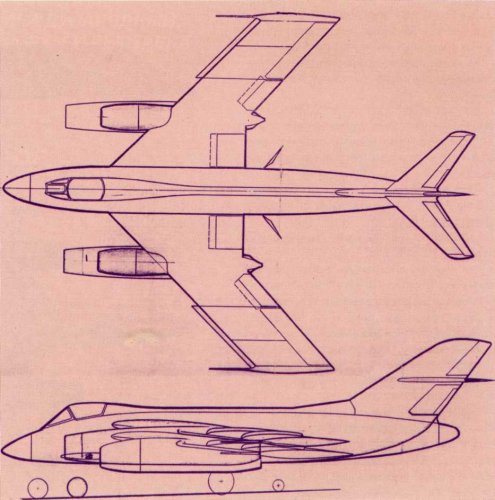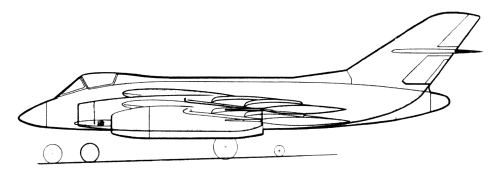- Joined
- 25 June 2009
- Messages
- 14,142
- Reaction score
- 4,334
Adapted from a Yakovlev inhouse publication:
Unknown pages in the history of domestic aviation
Close air support of ground troops has been one of the main tasks of military aircraft since its inception. The experience of wars and military conflicts, the development of aviation technology - all of it continuously made battlefield aircraft improve.
After the Second World War, the rapid development of jet aircraft increased the speed and altitude of aircraft. At the same time, the ongoing conflict consistently reaffirmed the need of the Air Force for quite simple and inexpensive specialized combat aircraft, adapted for assault action against ground targets. In the second half of the 1950s, solutions to this problem tried to accommodate existing high-speed jet tactical fighters. Tactical and technical requirements prevailed in specialized attack aircraft. Conducted in the fall of the 1967 in the Soviet Union, the large-scale "Dniepr" exercise showed, for example, that of all the supersonic MiG-21 and Su-7 and subsonic MiG-17 involved in ground troop support, the best results were achieved by the pilots who flew the MiG-17.
In early 1969 Ministerial Defense Marshal A. A. Grechko appealed to the leadership of the MAP for a proposal to hold a design competition for light attack aircraft (lyegkogo samolyeto shturmovika, or LSSh). By mid-March Air Force leadership had formulated the TTT attack aircraft, and in the same month MAP requested that the design bureaus of S. B. Ilyushin, A. I. Mikoyan, P. O. Sukhoi and A. S. Yakovlev start work on a competitive basis to develop preliminary LSSh designs according to the Air Force's TTT specification as of March 19, 1969. The result of this work, of course, was the emergence and adoption of the Su-25. Competitive projects by Ilyushin (Il-42) and Mikoyan (MiG-21LSh) are also known to the interested reader. The following is a description of Yakovlev's LSSH proposal, the Yak-25LSh (or Yak-LSh), which remained virtually unknown until 2009.
The light attack aircraft was designed for the air support of combined arms by land-attack enemy targets in the tactical and immediate operational depth. The main objective of the aircraft was to be the destruction of manpower and equipment, and the destruction of planes and helicopters from small and medium altitudes. Following the TTT specification, the Yakovlev Design Bureau worked on two light tactical attack aircraft variants. The first option was to create an entirely new aircraft and engine for it, which would require at least five years for its construction, testing and start of production. The second option was based on the operational Yak-25 fighter-interceptor and involved the reworking of the fuselage and the installation of equipment and weapons (attachment #1); it could be set up within 5-6 months. The swept-wing Yak-25 interceptor, with its two AM-5 turbojet engines with 2000 kgs of thrust, had proved an extremely reliable and safe aircraft, easy to pilot and available for rapid development. It was optimized to withstand emergency landings, even on unpaved runways and with the engine power down. As a result, the design bureau was asked to put the priority on an in-depth elaboration of this option.
Some of the major changes in the creation of a ground attack based on the Yak-25 were as follows:
Warload of the Yak-25LSh was 1500 kg (typical) and 3000 kg (maximum). Range bomb armament consisted of 50, 100, 250 and 500 kg bombs and of all types. On six underwing pylons could be placed up to four pods with GSh-23 guns and ammunition (250 shells). Guided weapons includes up to four Kh-23 and R-3S, and six S-24 / S-25 unguided rockets. An interesting solution was the accommodation in the fuselage of a 100-projectile unit, which was set within the main landing gear niche and could sink down for reloading or replacement. The unit could shoot forward and down at an angle of 45 deg., which means that missiles could be launched on ground targets in level flight, which in turn increased the survival rate of the aircraft at low altitudes.
- The nose of the fuselage was revised to ensure 20-degree forward and downward view;
- A new set of equipment replaced the interceptor's complex attack aircraft equipment;
- Two GSh-23 machine guns with 400 rounds and rockets fuselage block APS-57 or the KARS 57 for 100 pcs.
- Under-wing pylons made provision for outer suspension of six various weapons;
- The ejection seat allowed for rescue in all flight modes, including takeoff and landing.
As the project developed, it underwent some changes: the wing was moved from low to high position, its size was increased, and take-off and landing characteristics of the Yak-25LSh were improved. The installation of more powerful RD-9F and AM-11 engines was also studied (attachment #5). By the end of December 1971 the original form of attack aircraft had strongly changed. The plane, now called the Yak-LSh-2 (attachment #6) had its fuselage lengthened by 5 m, allowing for increased fuel capacity. The tail stabilizer was moved from the middle of the vertical fin down to the fuselage, its shape and size being increased. A completely new high-wing was also developed. Leading edge sweep was smaller, being 35 degrees instead of 45 degrees in the original version. All this greatly improved the aerodynamics of the aircraft, increased its maneuverability, the provided an opportunity to increase the weight of the payload. Installation of more sophisticated sighting equipment, including the FON-1400 laser range, was also planned.
When considering the LSSh projects presented by the contestants, Sukhoi's Su-25 was declared the winner but the losing design bureaus were denied access to the general conclusions of the Air Force. Yet the work of the teams at the Yakovlev OKB on the stormtrooper project had not been in vain. Despite the new level of technology involved, it was useful in the development of the Yak-130 combat training aircraft.
NOTE: Translation was approximative. Some bits were left out for lack of understanding. If anyone feels like improving it, the original text is also attached.







